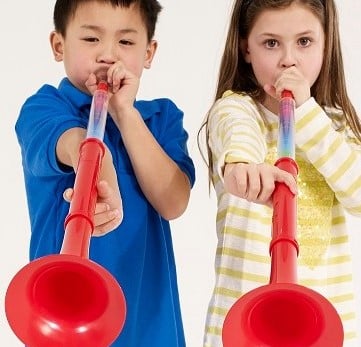
Topics:
March 22nd, 2021
2 min read
By Rich Breske

I love the recorder!
I’ve talked with hundreds of music educators over the years and not one has made this statement. Instead, teaching the recorder is something that is just done. It can help in teaching nomenclature and a bit about pitch, but it’s difficult to claim that a recorder is a substantial building block for future musical endeavors. It fits the budget, especially if parents pay for it. It goes home with the student, where it usually sits in the toy box until it meets the landfill. If only someone would invent a carbon-neutral, recyclable recorder that sounds great too...
Maybe I’m being too hard on the poor recorder. There have been few alternatives for elementary school music since the recorder was introduced. The recorder has been a staple in music education classrooms for over sixty years! What other options are out there to engage today's active students in instrumental music?

For many teachers around the world, the pBuzz has provided an innovative experience for both them and their students.
The pBuzz experience can motivate a student to further musical pursuits, including brass, woodwind, string, voice and even percussion. Here’s how:
For real-life examples of incorporating pBuzz into your classroom, visit our Teaching with pInstruments page on our website.
pBuzz is Affordable
How do you provide recorders? Do you charge a student fee and send them home every year? Whether the school provides the recorder or parents purchase them, pBuzz is usually as cost-effective, or more. Why? Priced from $4 to $15, you can buy six very cheap recorders for the price of one pBuzz - perhaps three recorders that are of decent classroom quality. However, one pBuzz should last several years and serve several students in one year, while providing a better, more motivating experience for all.
pBuzz is Safe
Every pBuzz includes a special mouthpiece made with Polygiene BioMaster technology, which resists bacteria and nanoviruses. For more information, see our antimicrobial additives blog.
Rich grew up on Chicago’s south side and attended Marist High School, where he was an active member and drum major of the school’s marching band. He attended Elmhurst College (University), receiving a degree in marketing and music-business. His early career included time at the Chicago Symphony and Ravinia Festival organizations, as well as classes at the Chicago-Kent College of Law. Rich’s career has been dedicated to music education. He has worked closely with educators, professionals, retail businesses and corporations. He has established key education partnerships and has served on the board of directors for several non-profit education organizations. He has provided executive planning and marketing acumen for 21st century companies through Strategic Marketing Management, LLC since 2011. Prior to opening his own firm, he served in key management roles at KHS America, Inc., the Conn-Selmer division of Steinway & Sons, Inc., and United Musical Instruments, all worldwide manufacturers and distributors. He served in the management of the SMART Foundation which provided programs and advocacy support for arts education. He has also authored several publications focused on the arts and education and has served on the boards of non-profit music education organizations.
Topics: